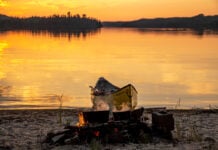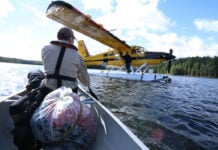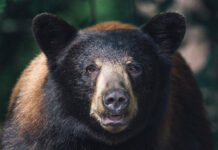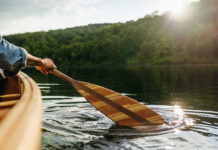The music died for Don McLean in 1959 when rock legend, Buddy Holly, died in a plane crash. The day the music died for me was the moment my college students got bored two minutes into Bill Mason’s 1984 Waterwalker. It was an outdoor leadership course and I thought it was prudent to show them this classic canoe film.
The eyeballs started to roll during the synthesized beats of Bruce Cockburn’s opening song of the same name. Then a few students started snoozing while Mason drifted through a beautiful early morning fog. By the time the stunning scene appeared of Mason painting on a rock ledge, overlooking Lake Superior, and there wasn’t a single “ooh” of awe, I knew I’d lost them all.
I grew up watching Waterwalker. I still watch it over and over again, all 86 minutes. It gets me through the long winters and never ending spring thaws. The film inspired my generation to dream big and get outdoors. Mason took us along for the ride on his real wilderness journey.
Never has the ethos of peace and solitude that canoe tripping offers been more apparent than in Mason’s work. In the film, he travels for two weeks along Superior’s coast, paddling from camp to camp, while carrying all his belongings.
Looking out over a sea of glazed eyes in the darkened classroom, I asked myself why these students were turning out. Was it Mason’s squeaky voice preaching environmentalism and Native philosophy? How about the unabashed way he connects spirituality and the natural world? Maybe it’s simply the long shot sequences, or the ‘80s folk music.
Desensitized to danger perhaps by waterfall-hucking Red Bull athletes, not one of my students even flinched when Mason dumped his canoe and found himself in serious danger in freezing Lake Superior. It was obvious the students hadn’t connected with this canonical work. Maybe they can’t.
In our instant gratification culture, long canoe trips, especially weeks paddling the rugged north shore of Lake Superior, are rare. While two-week trips were common 30 years ago, nowadays the average canoe trip lasts just a long weekend and takes place in nearby, semi-wilderness areas. Maybe they don’t understand how big, wild, cold and unconnected Superior can be.

The symbolic red Prospector canoe in a vast wilderness is beyond the imaginations of those in campgrounds providing free WiFi.
A canoe trip can be a transformative experience. The key to making this happen, however, is to spend time in the wilderness. Real time. A weekend jaunt may get you through a bad week at work. A week of paddling may even help your anxiety level during moments of crisis. But a multi-week canoe trip offers a Zen that you can draw on for a lifetime. My outdoor-ed students might miss out on all of that.
“The path of the paddle can be a means of getting things back to their original perspective,” Mason famously said.
Despite the eye rolls, note passing and light snoring; I won’t stop sharing Waterwalker with my students. Long trips are the heart and soul of canoe tripping. Even if only one student is inspired to dream bigger and push farther, I’ll have done my job.
Kevin Callan is the author of 15 books about canoeing and camping. Follow his adventures at thehappycamper.com.
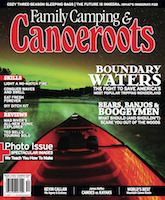
Subscribe to Paddling Magazine and get 25 years of digital magazine archives including our legacy titles: Rapid, Adventure Kayak and Canoeroots.



